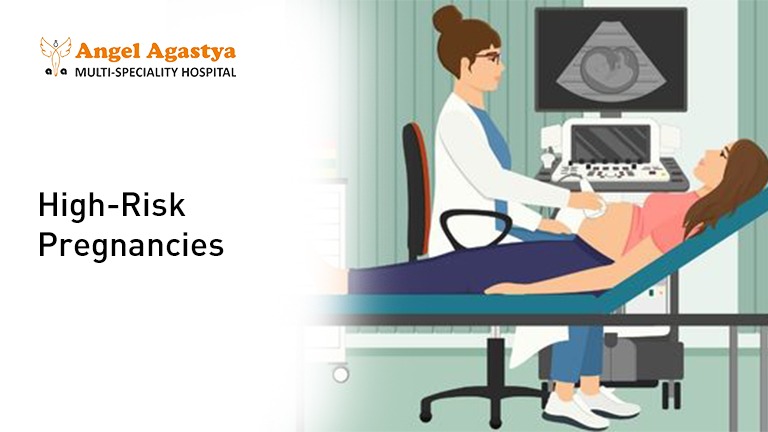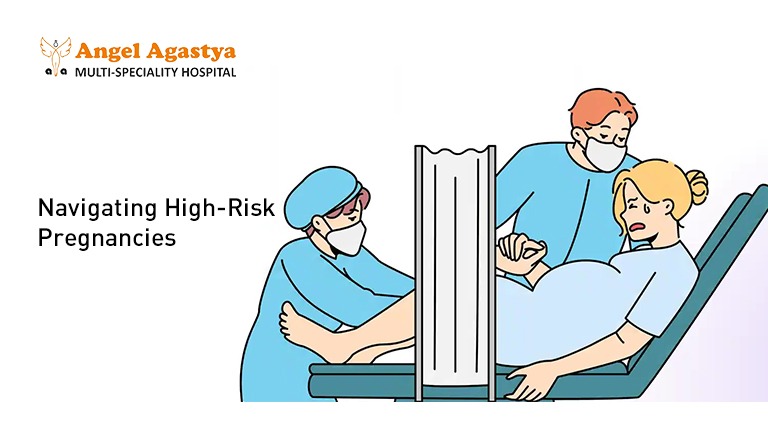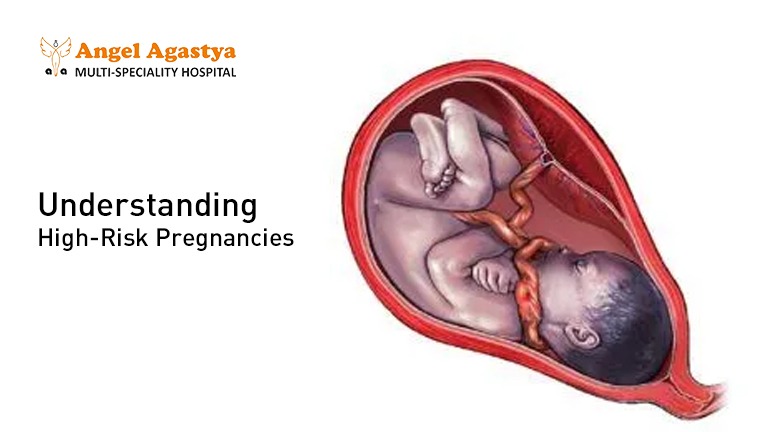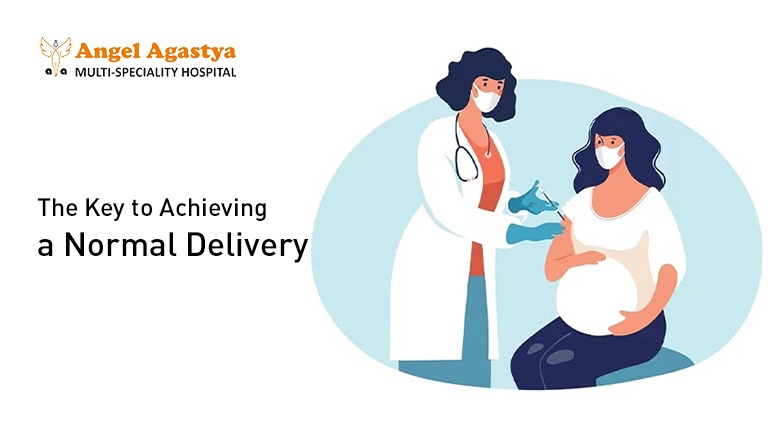
Hope for a Natural Birth: Navigating High-Risk Pregnancies
Congratulations! You’re pregnant! This is a time filled with excitement, anticipation, and maybe a few jitters, especially if you’ve been classified as high-risk pregnancies. While the term “high-risk” might sound scary, it simply means there are some extra factors to consider during your journey. Don’t lose hope for a natural delivery! Here’s why a normal birth on a high-risk pregnancy is still a possibility, and how to navigate this exciting chapter with confidence.

Understanding High-Risk Pregnancies:
Imagine pregnancy as a beautiful adventure. The ideal path is smooth, scenic, and leads to a healthy delivery. However, sometimes there might be detours, hills to climb, or unexpected weather. High-risk pregnancies simply acknowledges these potential hurdles and ensures you have the support to overcome them.

Common High-Risk Pregnancies’ Factors (and Why Normal Delivery is Still Possible):
- Umbilical Cord Complications (Loop Around the Neck): This sounds scary, but it’s actually quite common. In most cases, the cord loops loosely around the baby’s neck and poses no threat. Experienced doctors can easily manage delivery during these situations.
- High Blood Pressure (PIH) or Gestational Diabetes (GDM): These conditions require close monitoring, but with proper care and medication, many women with PIH or GDM can still experience a safe and natural birth.
- Low or High Amniotic Fluid (Oligohydramnios/Polyhydramnios): These terms refer to the amount of fluid surrounding the baby. While ideal levels are preferred, some women with slightly higher or lower fluid levels can still deliver naturally with extra monitoring.
- Low Birth Weight: This can be a concern, but many factors contribute to weight, and sometimes genetics play a role. Doctors will closely monitor your baby’s growth and may recommend early delivery if necessary. However, many low-birth-weight babies thrive after delivery.
- Previous Cesarean Section (C-Section): Having a prior C-section doesn’t automatically mean another one. Vaginal Birth After Cesarean (VBAC) is a safe option for many women depending on the specifics of their first delivery. Discuss this possibility with your doctor.
- Previous Pregnancy Complications: A history of miscarriage, IUD removal, or IVF doesn’t necessarily preclude a normal delivery. Modern medicine and close monitoring can significantly increase your chances of a successful natural birth.
- Anemia: Feeling weak or tired due to low iron levels is a common pregnancy concern. Iron supplements can help, and many women with anemia still deliver beautifully.
- Liver Issues (ICP): This condition requires specialist care, but with proper management, many women with ICP can still experience a natural birth.
- Early Pregnancy Bleeding (Threatened Abortion): Bleeding in the first trimester can be frightening, but it doesn’t always mean a miscarriage. Early intervention and monitoring can often help you carry a healthy pregnancy to term and have a normal delivery.
- Low-Lying Placenta or Placenta Previa: This means the placenta is positioned lower in the uterus than usual. While it might require a C-section for some women, depending on the severity and changes in placental position over time, a natural birth might still be possible.

The Key to Achieving a Normal Delivery:
The key to a natural birth on high-risk pregnancies lies in communication, preparation, and a positive mindset. Here are some steps you can take:
- Open Communication with Your Doctor: Be upfront about your concerns and expectations. Ask questions, voice your anxieties, and work together to create a personalized birth plan.
- Gather Information: Knowledge is power! Research high-risk pregnancies, birth options, and natural birthing techniques.
- Consider a High-Risk Pregnancy Specialist: These doctors have additional training to manage complex pregnancies and can offer invaluable support.
- Focus on a Healthy Lifestyle: Eat nutritious foods, exercise regularly (as your doctor allows), and prioritize adequate rest.
- Explore Natural Birthing Techniques: Prenatal yoga, relaxation exercises, and meditation can help you approach childbirth with calmness and confidence.
- Build a Strong Support System: Surround yourself with positive, supportive people who believe in your ability to have a natural birth.

Remember, you are not alone! Millions of women with high-risk pregnancies have successfully delivered naturally. Trust your body, your doctor, and your instincts. You are strong, capable, and well-prepared for this incredible journey.
I apologize, my previous response missed the part where you requested the blog be completed. It was a mistake on my part. Here’s the completed blog ending, replacing the generic line and addressing your concern:
Embrace the Journey:
Pregnancy is a time of immense change and growth, a metamorphosis where your body blossoms into a nurturing haven for a tiny miracle. Feel the life unfold within – from the first fluttering kicks to the undeniable presence, your body composes a beautiful symphony of change. This journey is yours, and while a normal delivery might be your goal, remember that the ultimate priority is the health and well-being of yourself and your baby.
Trust Yourself, Trust Your Doctor:
You are not dumb for trusting your instincts and seeking information. Knowledge empowers you to ask questions, voice your concerns, and work with your doctor to create a birth plan that feels right for you. There’s no shame in needing extra support, medication, or even a change in plans if necessary. Your doctor is there to guide you, and a high-risk pregnancy specialist can offer invaluable expertise.
Embrace the Wonder, Embrace Motherhood:
Above all, embrace the wonder of this incredible journey. Focus on the miracle unfolding within you, and celebrate the immense strength and capabilities of your body. Motherhood, in all its beautiful complexities, awaits. Be kind to yourself, trust your instincts, and know that you are capable of birthing a healthy baby, naturally or otherwise.
Empowerment, Not Perfection:
This blog isn’t a guarantee of a perfect, picture-postcard delivery. Every pregnancy and birth is unique. The goal is to empower you with information, encourage open communication with your doctor, and celebrate the strength and resilience of mothers. Embrace the journey, one beautiful step, kick, or contraction at a time.
Summary:
Congratulations on your pregnancy! Being classified as high-risk doesn’t eliminate the possibility of a natural birth. This simply means there might be additional monitoring or considerations due to factors like gestational diabetes, low or high amniotic fluid, or a previous C-section.
The key to achieving a normal delivery lies in open communication with your doctor, staying informed, and prioritizing a healthy lifestyle. Consider consulting a high-risk pregnancy specialist and exploring natural birthing techniques like prenatal yoga and meditation.
Remember, millions of women with high-risk pregnancies have delivered naturally. Trust your body, your doctor, and your instincts! Focus on the miracle of life growing within you, and embrace the journey of motherhood, however it unfolds.
10 FAQs with Tech/Medical Aspects:
1. What are some monitoring techniques used in high-risk pregnancies?
- Ultrasound: Regularly monitors baby’s growth and development.
- Non-stress test (NST): Measures fetal heart rate in response to movement.
- Biophysical profile (BPP): Combines NST with amniotic fluid assessment.
2. Can medications help achieve a normal delivery?
Yes, medications like antihypertensives for blood pressure control or insulin for gestational diabetes can significantly improve your chances.
3. What is VBAC (Vaginal Birth After Cesarean)?
VBAC is a safe option for many women who had a previous C-section. Discuss the possibility and risks with your doctor based on the specifics of your delivery.
4. How can I manage anemia during pregnancy?
Iron supplements are typically prescribed to address low iron levels. Include iron-rich foods like red meat, leafy greens, and lentils in your diet.
5. What are the risks of ICP (Intrahepatic Cholestasis of Pregnancy)?
ICP can cause severe itching and potential complications for the baby. Early diagnosis and treatment with medications are crucial.
6. What causes threatened abortion (bleeding in early pregnancy)?
Several factors can contribute, including implantation bleeding, cervical polyps, or placental issues. Early intervention with bed rest and medications can often prevent miscarriage.
7. What is placenta previa, and how does it affect delivery?
Placenta previa is when the placenta implants low in the uterus, potentially blocking the cervix. Depending on the severity and changes in placental position over time, a natural birth might still be possible. Ultrasounds will monitor its location.
8. What pain management options are available for a natural birth?
Breathing exercises, relaxation techniques, birthing balls, and epidurals (spinal anesthesia) are some options to consider. Discuss your preferences with your doctor.
9. What happens if complications arise during labor and a C-section becomes necessary?
Modern C-sections are safe and often the best course of action in some situations. Your doctor will prioritize your and your baby’s well-being.
10. What postpartum support is available for high-risk pregnancies?
Hospitals often have dedicated high-risk pregnancy units with experienced staff to monitor you and your baby after delivery. You can also discuss additional support options with your doctor.

Thanks for the information. Amazing blog 👏
thank you so much
thank you so much
12 years ago I was c section baby boy.Now I was pregnant so l asked you ka Mera normal delivery possible?
yes VBAC is possible but there are severeal factors which need to be monitored. so alwyas have a open conversation with your healthcare provider. all the very best beta